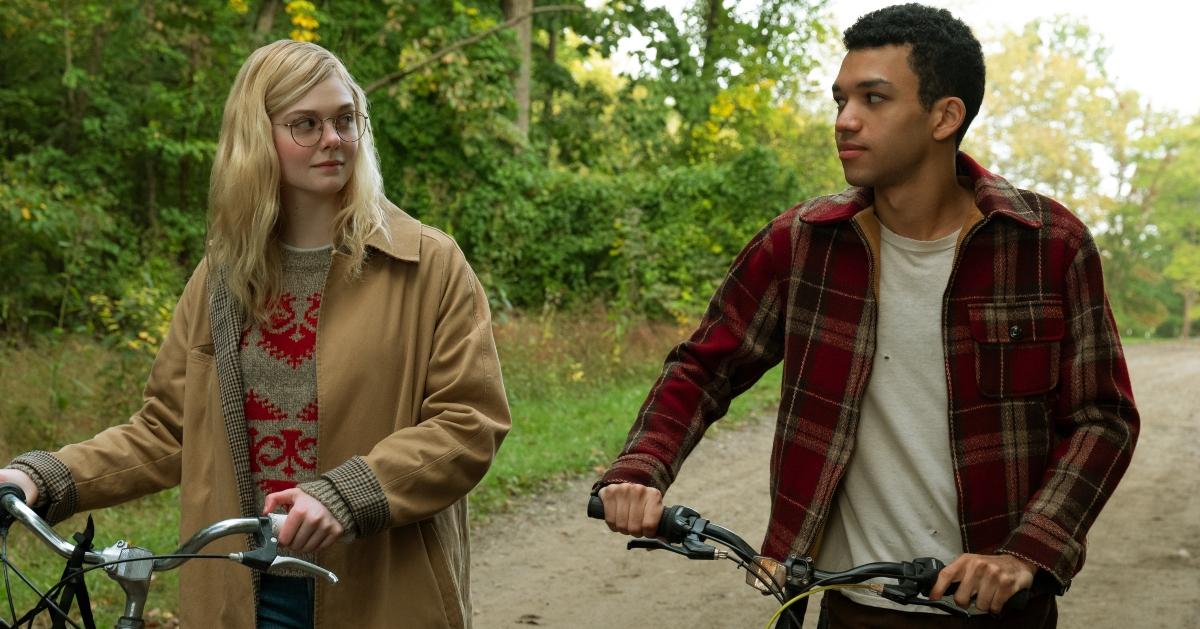'All the Bright Places' Is so Dark That It Received a TV-MA Rating From Netflix
Updated March 3 2020, 4:11 p.m. ET

By now, you've likely heard of (and possibly had your heart ripped out by) All the Bright Places on Netflix. The original movie is based on the novel of the same name by Jennifer Niven, and it chronicles teenagers Theodore Finch (Justice Smith) and Violet Markey (Elle Fanning) as they fall in love, and deal with their own respective struggles with mental illness and trauma.
If you thought that All the Bright Places was a coming-of-age romance with a traditionally happy ending, then you'd be very, very wrong.
Many who didn't read the book version were warned as to how dark the plot would get when they noticed that the film had a TV-MA (mature) rating.
Why is All the Bright Places rated TV-MA? Read on to find out what happens in the movie to warrant such a strong rating. Spoilers ahead and trigger warning.

Why is 'All the Bright Places' rated TV-MA? SPOILERS!
A movie that has a TV-MA rating is certainly not for the faint of heart — or for kids. According to Spectrum, TV content with this rating is, "Intended for adults and may be unsuitable for children under 17. Possibly contains crude indecent language, explicit sexual activity or graphic violence."
At the beginning of the movie, the All the Bright Places lists its MA rating for a blink-and-you-might-miss-it few seconds, and it cites, "suicide and language" as the reasoning.
As viewers know, Finch does tragically commit suicide at the end of the movie, which is enough to warrant a TV-MA rating on its own. Plus, both he and Violet are contemplating killing themselves by jumping off a bridge in the beginning of the movie, which is actually how they first meet.
Though Violet and Finch help each other in the beginning of the movie, Violet is too late when it comes to saving her beau's life at the end.
After getting into a blowout fight with Violet as a result of disagreeing with her parents, Finch takes his own life by drowning himself.

The sensitive topic is explored in a delicate manner in the movie, as it's meant to shine a light on the intricacies and realities of mental illness. Though this is the intention, the subject matter is, of course, very serious, which is why the movie is rated MA.
Viewers are calling for Netflix to be more transparent about the film's subject matter.
While much of the chatter online is celebrating the way that ATBP portrays mental illness and young love (and how closely it kept the themes existent in the book version), many people are upset at the way that Netflix presented the film. For starters, the trailer makes the film seem as though it is a romantic comedy, and that it is more of a lighthearted love story.
Others found that the brief flashing of the TV-MA rating at the onset of the movie wasn't enough of a trigger warning for viewers who may have experienced similar loss, feelings, or trauma. In addition, a multitude of viewers suggested that Netflix should have issued an explicit trigger warning at the beginning of the film, as a supplement to the MA rating.

Some compared Netflix's lack of proper warning to the fallout from the release of Season 1 of the controversial 13 Reasons Why. When that show premiered in 2017, a popular sentiment was that the suicide scene of Hannah Baker was potentially glorifying the subject instead of doing actual good to spread awareness.
Netflix has not commented on the lack of trigger warning from All the Bright Places at this time.
If you or someone you know is contemplating suicide, call the National Suicide Prevention Lifeline at 1-800-273-8255.